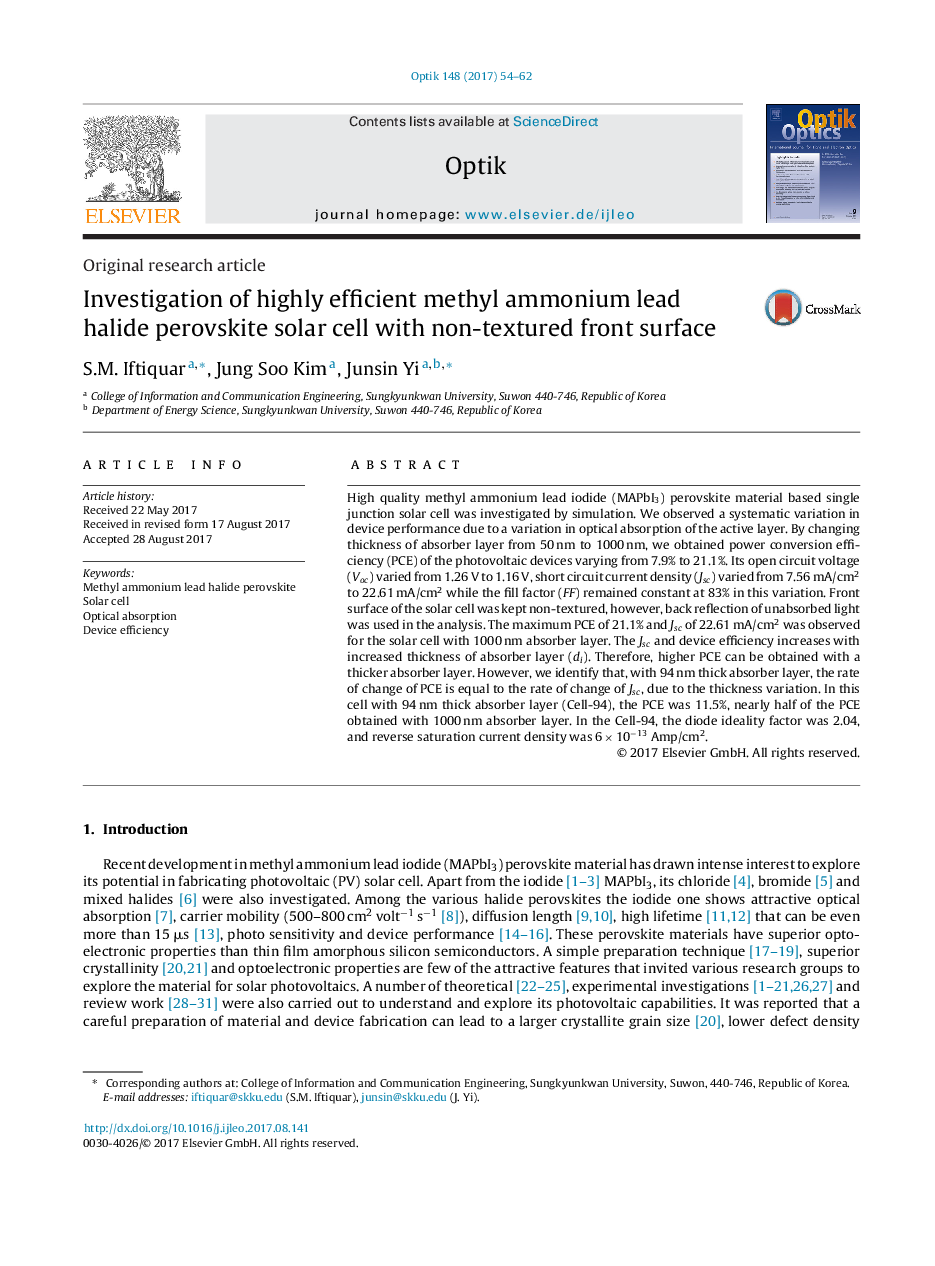| Article ID | Journal | Published Year | Pages | File Type |
|---|---|---|---|---|
| 5025033 | Optik - International Journal for Light and Electron Optics | 2017 | 9 Pages |
Abstract
High quality methyl ammonium lead iodide (MAPbI3) perovskite material based single junction solar cell was investigated by simulation. We observed a systematic variation in device performance due to a variation in optical absorption of the active layer. By changing thickness of absorber layer from 50Â nm to 1000Â nm, we obtained power conversion efficiency (PCE) of the photovoltaic devices varying from 7.9% to 21.1%. Its open circuit voltage (Voc) varied from 1.26Â V to 1.16Â V, short circuit current density (Jsc) varied from 7.56Â mA/cm2 to 22.61Â mA/cm2 while the fill factor (FF) remained constant at 83% in this variation. Front surface of the solar cell was kept non-textured, however, back reflection of unabsorbed light was used in the analysis. The maximum PCE of 21.1% and Jsc of 22.61Â mA/cm2 was observed for the solar cell with 1000Â nm absorber layer. The Jsc and device efficiency increases with increased thickness of absorber layer (di). Therefore, higher PCE can be obtained with a thicker absorber layer. However, we identify that, with 94Â nm thick absorber layer, the rate of change of PCE is equal to the rate of change of Jsc, due to the thickness variation. In this cell with 94Â nm thick absorber layer (Cell-94), the PCE was 11.5%, nearly half of the PCE obtained with 1000Â nm absorber layer. In the Cell-94, the diode ideality factor was 2.04, and reverse saturation current density was 6Â ÃÂ 10â13 Amp/cm2.
Related Topics
Physical Sciences and Engineering
Engineering
Engineering (General)
Authors
S.M. Iftiquar, Jung Soo Kim, Junsin Yi,
